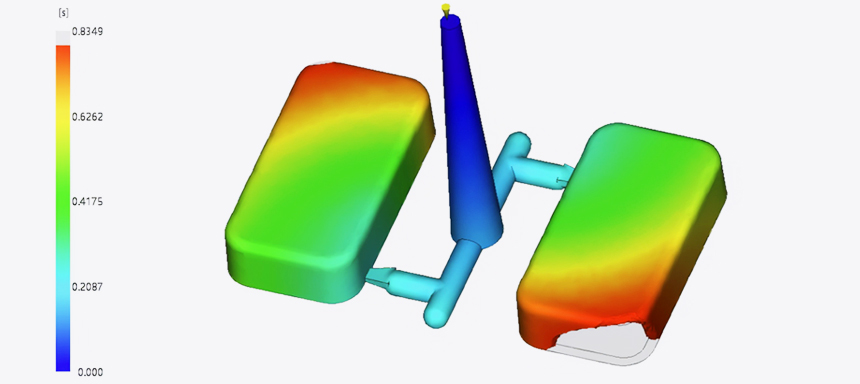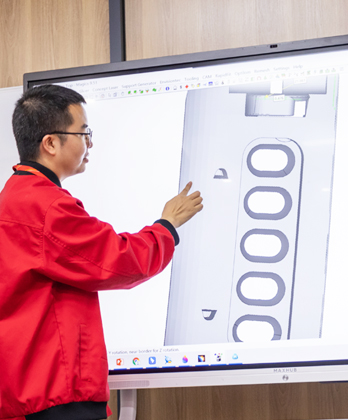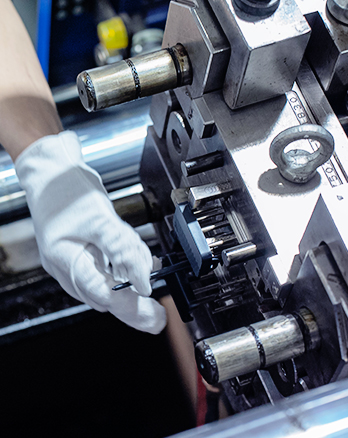
Unlocking Quality in Injection Molding:
The Role of Mold Flow Analysis
Even the smallest design flaw or mold imperfection can lead to big quality issues in injection molding—warping, sink marks, or weak structural integrity. High-quality parts require more than just a well-thought-out design; they demand a proactive approach to ensure manufacturability. This is where Mold Flow Analysis (MFA) steps in, providing critical insights to refine designs, reduce defects, and pave the way for efficient production.
What Is Mold Flow Analysis?
Mold Flow Analysis is a simulation technique that predicts the flow of molten material within a mold cavity during injection molding. Using advanced software tools, it evaluates critical parameters such as flow patterns, cooling efficiency, pressure distribution, and potential defects like warping or sink marks. This process helps engineers optimize designs and material selection, significantly reducing the need for physical prototypes and minimizing risks during production.


When Should Mold Flow Analysis Be Used?
For projects requiring precision or complex geometries, Mold Flow Analysis is highly recommended. It provides crucial insights to ensure the design is manufacturable, minimizes defects, and helps save time and costs in the long run. By identifying potential issues early, it reduces trial-and-error cycles, ensuring smoother production and better-quality parts.
How Mold Flow Analysis Supports Design for Manufacturability (DFM)
Mold Flow Analysis plays a pivotal role in optimizing the design and manufacturing process by addressing potential challenges early. Here are keyways MFA contributes to Design for Manufacturability (DFM):
● Refining Gate Placement
Proper gate placement is critical for ensuring a smooth and consistent material flow within the mold. By simulating different gate positions, MFA identifies the optimal placement to minimize weld lines, air traps, and other flow-related defects. This not only improves part quality but also enhances the structural integrity and appearance of the final product. For example, poor gate placement can lead to
● Balancing Material Distribution
Mold Flow Analysis evaluates how material fills the mold cavity, identifying regions where uneven distribution might occur. If one section fills faster than another, it can lead to defects like overpacking or underfilling. MFA allows engineers to adjust runner and gate designs to balance the flow, ensuring the material is distributed evenly throughout the cavity. This step is essential for achieving
Proper gate placement is critical for ensuring a smooth and consistent material flow within the mold. By simulating different gate positions, MFA identifies the optimal placement to minimize weld lines, air traps, and other flow-related defects. This not only improves part quality but also enhances the structural integrity and appearance of the final product. For example, poor gate placement can lead to
● Balancing Material Distribution
Mold Flow Analysis evaluates how material fills the mold cavity, identifying regions where uneven distribution might occur. If one section fills faster than another, it can lead to defects like overpacking or underfilling. MFA allows engineers to adjust runner and gate designs to balance the flow, ensuring the material is distributed evenly throughout the cavity. This step is essential for achieving

● Improving Cooling Strategies
The cooling phase is one of the most critical stages in injection molding, as uneven cooling can lead to warping or dimensional inaccuracies. MFA simulates cooling patterns, helping engineers design efficient cooling channels that ensure uniform temperature distribution. By reducing cooling-related defects, MFA not only enhances part quality but also shortens the overall cycle time, improving production efficiency and lowering costs.
The cooling phase is one of the most critical stages in injection molding, as uneven cooling can lead to warping or dimensional inaccuracies. MFA simulates cooling patterns, helping engineers design efficient cooling channels that ensure uniform temperature distribution. By reducing cooling-related defects, MFA not only enhances part quality but also shortens the overall cycle time, improving production efficiency and lowering costs.
● Predicting Shrinkage and Warpage
Different materials shrink at different rates during cooling, which can distort the final part dimensions. Mold Flow Analysis predicts these shrinkage patterns and highlights areas where warpage might occur. By accounting for these factors in the design phase, engineers can make necessary adjustments, such as altering the mold dimensions or modifying material choices, to ensure parts meet exact specifications.
Different materials shrink at different rates during cooling, which can distort the final part dimensions. Mold Flow Analysis predicts these shrinkage patterns and highlights areas where warpage might occur. By accounting for these factors in the design phase, engineers can make necessary adjustments, such as altering the mold dimensions or modifying material choices, to ensure parts meet exact specifications.
● Reducing Cycle Times
By analyzing filling, packing, and cooling phases, MFA provides insights into optimizing the entire molding process. For instance, it can identify opportunities to speed up material flow without causing defects or to streamline cooling times by improving channel designs. These optimizations not only increase production speed but also lower manufacturing costs, making the process more efficient. By incorporating Mold Flow Analysis early in the design process, manufacturers can significantly enhance the manufacturability of their parts, ensuring smoother production, higher quality, and fewer delays caused by defects or design inefficiencies. This proactive approach is a key driver of successful injection molding projects.
By analyzing filling, packing, and cooling phases, MFA provides insights into optimizing the entire molding process. For instance, it can identify opportunities to speed up material flow without causing defects or to streamline cooling times by improving channel designs. These optimizations not only increase production speed but also lower manufacturing costs, making the process more efficient.
RPWORLD—Comprehensive Injection Molding Solutions
At RPWORLD, we go beyond Mold Flow Analysis to offer a full range of injection molding services tailored to your needs:
► Lead Times as Fast as 7 Days: Delivering production-ready parts quickly to accelerate your product to market.
► 100+ Material Options: From engineering-grade plastics to specialized materials such as medical-grade materials, food-grade materials and more, we provide flexibility to meet diverse application requirements.
► In-House Mold Design & Fabrication: Expertly designed molds to match your project specifications, reducing lead times and improving precision.
► Rigorous Quality Assurance: Advanced inspection tools combining with stringent quality controls ensure every part meets exact specifications, from first article inspection to final quality checks.
► Extensive Finishing Options: Choose from surface finishing, painting, texturing, and more to achieve the perfect part appearance and functionality.
► 100+ Material Options: From engineering-grade plastics to specialized materials such as medical-grade materials, food-grade materials and more, we provide flexibility to meet diverse application requirements.
► In-House Mold Design & Fabrication: Expertly designed molds to match your project specifications, reducing lead times and improving precision.
► Rigorous Quality Assurance: Advanced inspection tools combining with stringent quality controls ensure every part meets exact specifications, from first article inspection to final quality checks.
► Extensive Finishing Options: Choose from surface finishing, painting, texturing, and more to achieve the perfect part appearance and functionality.

Ready to optimize your injection molding project? With over 20 years of experience, RPWORLD delivers customized manufacturing solutions from prototyping and production, helping you achieve consistent high-quality parts within fastest time, launching products to markets soon. Contact us for a free consultation and discover how our advanced injection molding services, including Mold Flow Analysis, can bring your designs to life!